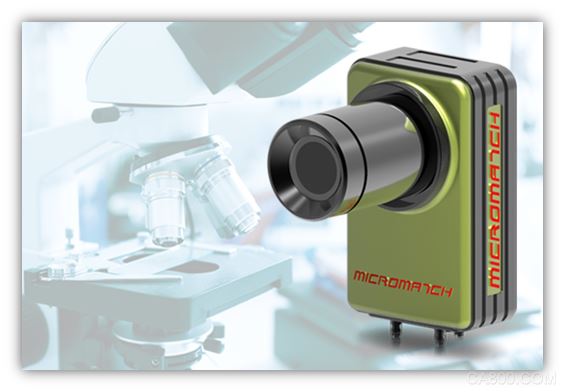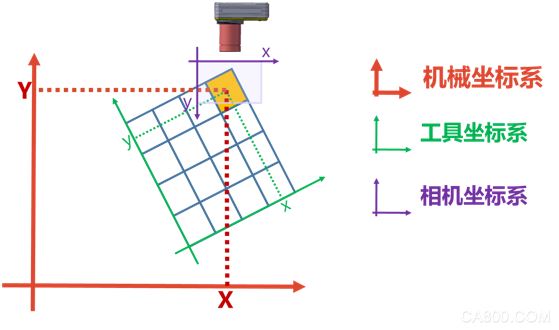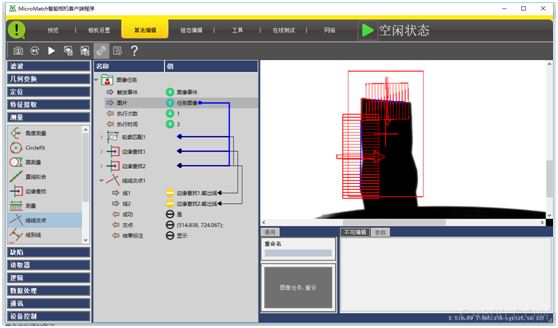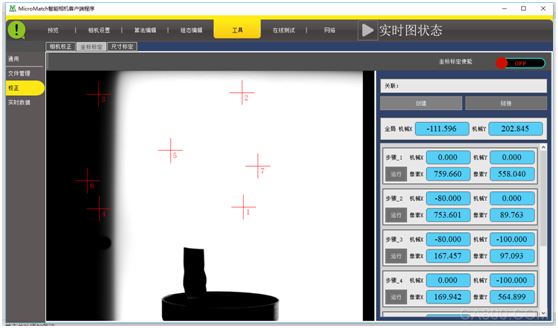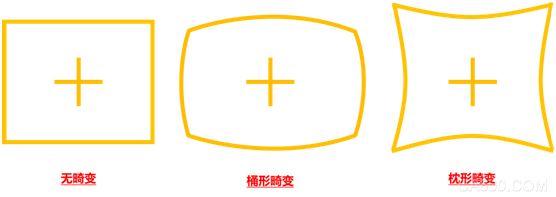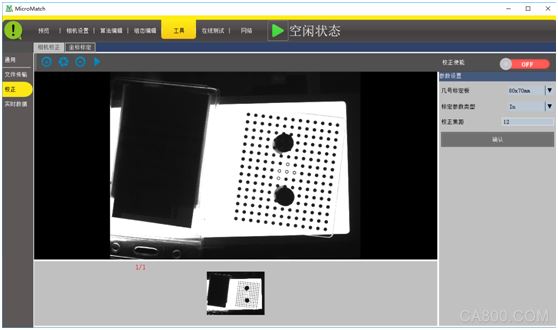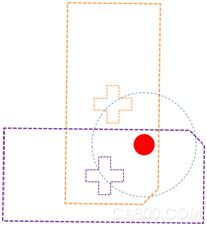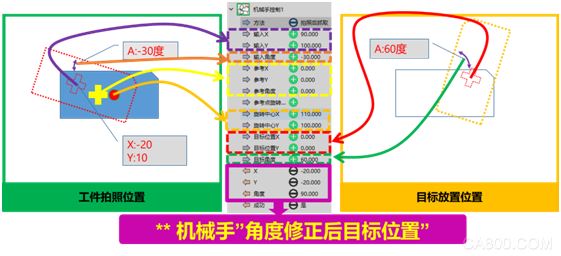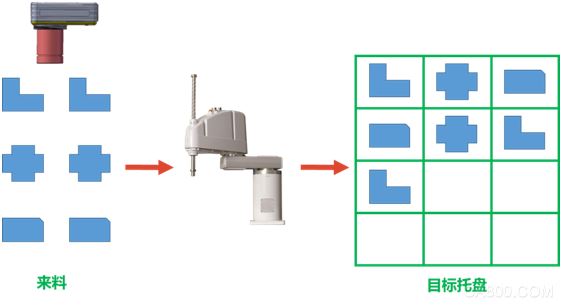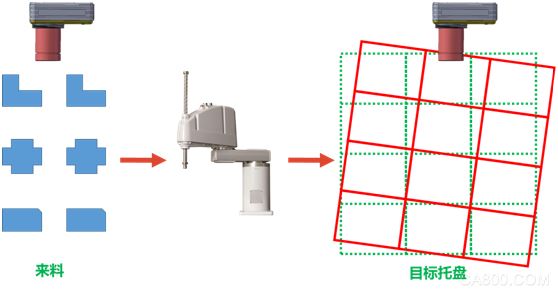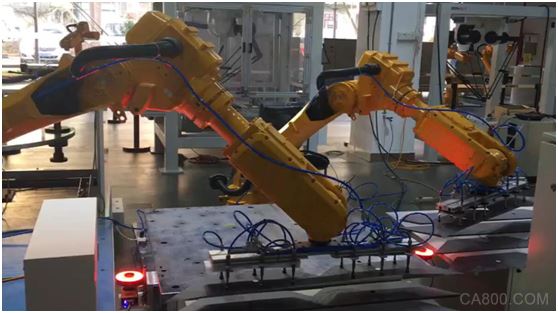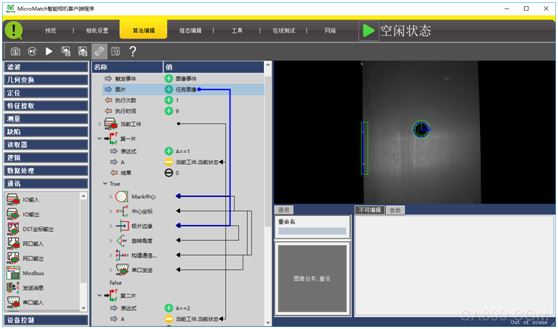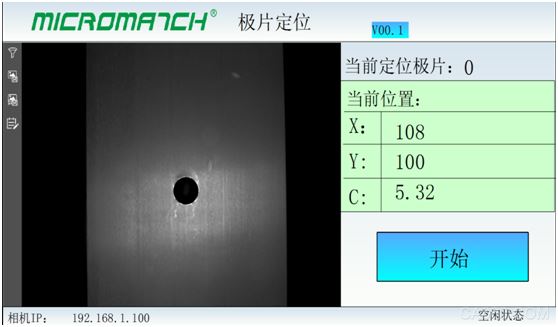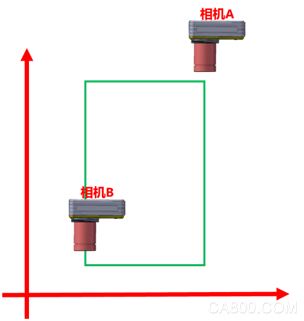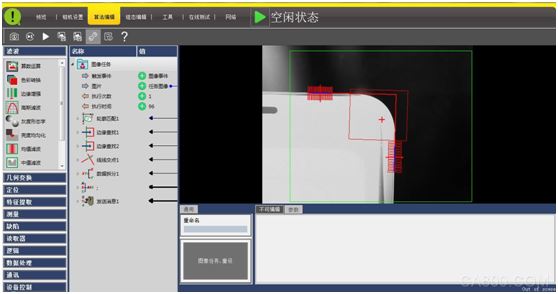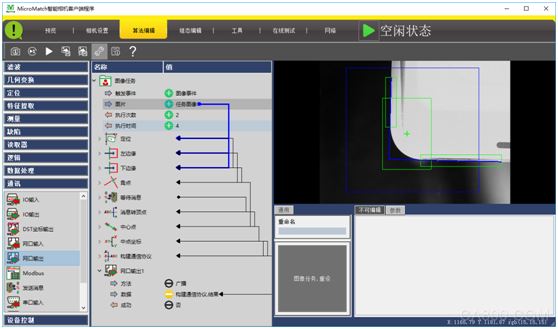Overview With the increase of domestic labor costs year by year, under the background of the gradual disappearance of the advantages of cheap labor in China, “machine substitution†has become a general trend. At the same time, China's manufacturing industry is facing a transition to a high-end, undertaking advanced international manufacturing and further demanding the development of industrial robots in the direction of intelligence. Intelligent industrial robots will become the future technological commanding point and economic growth point. Intelligent industrial robots integrate personal software modules, sensors, and vision systems in the best possible way. In the intelligent elements of the robot, the vision system is the core, especially in high-precision situations, without the guidance of the visual system, the robot can not complete the work. For robot vision guidance, the MicroMatch Smart Camera is a great choice. The MicroMatch Smart Camera is an ultra-compact, one-piece, smart camera developed by McMasch Electronics that enables fast and accurate inspection of all parts and components in all industries. Its compact size allows easy installation on space-constrained production lines, and the unique modular design can be highly customized on-site according to application requirements. The MicroMatch smart camera is a cost-effective solution. The Micro6000 series of industrial smart cameras have a small, rugged, industrial-grade enclosure that is resistant to vibration and shock, and integrates RS-232/485, Ethernet, and multiplex digital I/. O, VGA output display, USB peripheral input and other hardware interfaces can meet the communication access of different brands of equipment on various industrial sites, and integrates rich machine vision algorithm tools. Micro6000 series smart cameras are widely used in automated manufacturing of electronic products and consumer goods and other industries, including food and beverages, pharmaceuticals, packaging, logistics, aviation, semiconductors, solar energy, new energy batteries, robot positioning and guidance industries. Key technologies There are many key technologies involved in robot-guided vision applications, and there are mainly the following aspects related to vision. First, coordinate calibration technology (hand-eye calibration) In the robot guidance application, it involves the conversion of multiple coordinate systems, a robot coordinate system, a tool coordinate system, an image coordinate system, and the like. In this type of application, the correspondence between the various coordinate systems must first be determined. The MicroMatch Smart Camera provides an automated method for performing calibrations between various coordinate systems. The automatic calibration method for many visual products is to fix or install the calibration plate on the robot. This method has a great limitation in practical projects. Because in many projects, especially in high-precision situations, the camera's shooting position is likely to be outside the robot's stroke, or due to mechanical structure design, the robot can not move to the camera's field of view at all. In response to these problems, MicroMatch uses a more flexible calibration scheme that allows the robot to pick up a "rigid body" with obvious characteristics. As long as the "rigid body" section can enter the camera's shooting range, complete a series of specified actions, you can complete the calibration, convenient and quick. Since the robot grabs an "arbitrary rigid body" and does not have pre-set feature points, the advanced algorithm configuration function of MicroMatch software is required to extract the feature points. After the algorithm extracts the feature points, it automatically obtains the position of the feature points after the movement according to the specified movement and completes the calibration. Second, the lens distortion correction technology Lens distortion is an inherent perspective distortion of the optical lens, which is an inherent characteristic of the lens and cannot be eliminated but only improved. This kind of distortion is very unfavorable for the visual image quality of the photo. The lens distortion causes the position of the feature point of the actual image to be deviated. In the high-precision visual guidance project, the distortion of the lens must be accurately corrected. The lens distortion correction technology is relatively mature, but it is more complicated in the actual project application. A very prominent problem is that due to limitations of the installation space of the mechanism, light source illumination mode, etc., a complete calibration board image cannot be obtained, which brings about a pole to the calibration work. Big challenge. To solve this problem, the MicroMatch smart camera adopts a customized calibration plate and a more robust calibration algorithm. It can accurately complete the lens when the calibration plate is incomplete, partially obstructed, or even partially blocked inside the calibration plate. Distortion calibration. Fix the distortion calibration when the part of the calibration plate is occluded Third, robot rotation compensation technology In the actual robot guidance project, the robots need to customize different “fixtures†according to the captured products, which brings a very big problem to the high-precision robot guidance project, namely the center of the fixture and the rotation center of the robot. There is a deviation. This deviation directly leads to a great decrease in accuracy on many items involving rotation, and correcting this deviation is very complicated. Some foreign robot control systems support the rotation center compensation technology, but this compensation can only be achieved through visual inspection. The “visual†correction method will seriously reduce the system accuracy and can only reduce the impact of this factor to some extent. , but there is no guarantee of accuracy. Moreover, most of the domestically-made robot systems do not have this function. Compensation for the robot's rotation can only be solved with a matching vision system. In the figure above, the reticle is the center of the fixture, and the red point is the center of the rotation axis of the robot. As can be seen from the figure, once the workpiece angle rotates, the center of the fixture changes, and the size of the change directly relates to the angle of rotation. Unfortunately, this red center of rotation is "where" and there is no easy way to measure it. To solve this problem, MicroMatch specially developed a robot control module. According to the actual project work mode, according to the difference between the first photographing and then grabbing, or grabbing and then photographing, according to the operation steps, the system automatically completes the compensation of the two center deviations. . Fourth, multi-logical multi-objective management technology In many robot-guided projects, the robot needs to involve multiple logical and multi-objective controls. A robot needs to grab a different product and then place it in a different target location, as illustrated in the figure below. Because the target tray has multiple points, it needs to be placed in order according to the type of product and the desired target position. The management of the target position is more complicated. This part of the work can be managed by the robot, but the maintenance and modification of the robot program are bothersome. Further, the position of the target tray is not fixed, as shown below For this requirement, the usual control logic is: The left camera sends the product coordinates and model number to the robot. The right camera sends the position change of the target tray to the robot. The robot calculates the position of the tray (red grid) after the change according to the preset target grid and pallet position changes. Place it in a different location depending on the product model. This method has two troubles in the actual operation: 1. Many robots do not support the function of calculating the coordinate transformation according to the deviation (translation and rotation) (calculate the position of the red grid according to the green grid and the deviation); 2. The product placement accuracy is relative to the tray, and the position of the target tray in the robot coordinate system cannot be accurately determined. For this complex scenario, the MicroMatch Smart Camera System integrates multiple logic and multi-object management functions into the software. It does not require the robot module to read the product type, nor does it require the robot to calculate the position change of the calculation tray based on the variation. The final target position that the corresponding product needs to be placed is directly sent to the robot at one time, which greatly reduces the coordination complexity between the vision and the robot. V. Communication Technology As a standard product, the MicroMatch Smart Camera is ideally suited to facilitate the application of various robot vision guidance projects and to communicate with various brands of robots. MicroMatch smart camera adopts unique and convenient "free protocol" technology, which can be based on the communication rules of different robot manufacturers. The project needs to complete the docking work with various robots without programming. If the manipulator requests to send 3 data (X, Y and angles), each data has 8 significant digits, and 3 decimal places are reserved after the decimal point. Each digit is separated by a number; The required protocol format is: Image: 0000.000;0000.000;0000.000 Done Use the MicroMatch Smart Camera's Build Free Protocol Module to set the following parameters: The corresponding output is Typical Case First, the metal assembly case The project requirement is that the manipulator blindly catches the “metal piece†and then takes a photo to the top of the camera. The MicroMatch intelligent camera takes a photo and controls the manipulator to place the metal part at the specified position. The project needs to assemble five different "metal parts". Two robots and two MicroMatch smart cameras are used to speed up the process. Two are assembled in one table and three in another. Since the five pieces of the captured product are different, the corresponding placement positions are also different. Since the MicroMatch smart camera has multiple logic processing functions, a simple smart camera control robot can grab the “different†products and place them at “different†target positions. (plan implementation site) 1. Perform lens distortion correction and hand-eye calibration using automated methods; 2. Use the algorithm configuration function of MicroMatch software to extract the product feature point coordinates; Due to the design of multiple logic controls, the configuration algorithm reads the robot instructions and then makes logical decisions, executing different algorithms based on the instructions. 3, calculate the product rotation angle; 4, robot rotation compensation; 5, build a robot communication protocol; 6, serial output control robot movements; (Algorithm flowchart) In addition to supporting any editing algorithm flow, the MicroMatch smart camera system can also customize the publishing interface. The delivered project interface is as follows (configuration interface) Second, high-precision fitting case The background of the project is the high-precision fit of the screen, the precision of the robot's pasting is 6u, and the scheme adopts the dual camera to shoot diagonally to improve the accuracy. Due to the need for dual camera cooperation, one camera's data needs to be sent to another camera, and the other camera receives the data and calculates the final result to control the robot. 1, camera A control program Camera A gets two sides of the phone, then calculates the intersection of the two sides, then uses the Send Message module to send the point to Camera B 2, camera B control program Camera B uses the same method to acquire another intersection of the screen, then uses the “receive message†module to receive the coordinates from camera A, calculates the center coordinates, and uses the robot module to perform the rotation compensation. The compensated value controls the robot movement. to sum up The MicroMatch smart camera greatly reduces the threshold of manipulator vision guidance control. It can not only achieve single-camera cooperation but also can achieve multi-camera coordination of high-precision multi-station complex application scenarios, software integration, multi-logic and multi-object management, Complex functions reduce robotic programming workload.
This is a special vozol Alien 2 electronic cigarette product series. We sell Vozol Vape, vozol vape Pen, vozol vape 3000 Puffs, and other vozol vapes.
We are specialized electronic cigarette manufacturers from China, Vapes For Smoking, Vape Pen Kits suppliers/factory, wholesale high-quality
products of Modern E-Cigarette R & D and manufacturing, we have the perfect after-sales service and technical support. Look forward to
your cooperation!
vozol alien 2 vape kit,vozol alien 2 vape pen, vozol alien 2 e-cigarette, vozol alien 2 vape 600 puffs,vozol alien 2 disposable vape Ningbo Autrends International Trade Co.,Ltd. , https://www.mosvapor.com